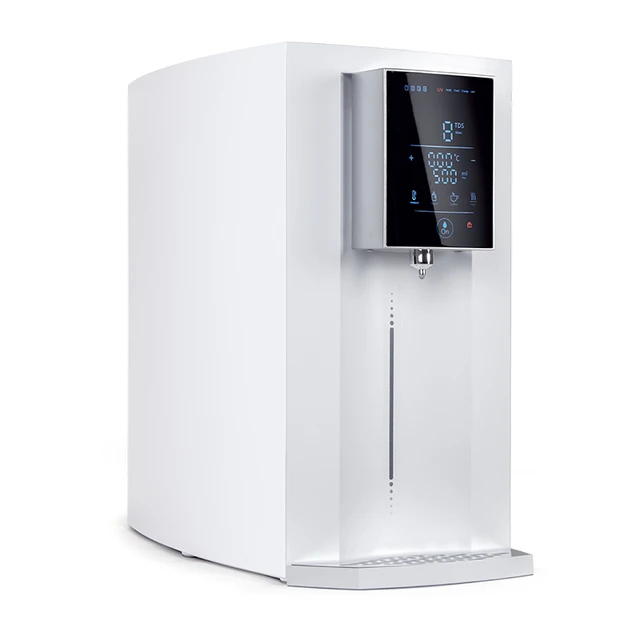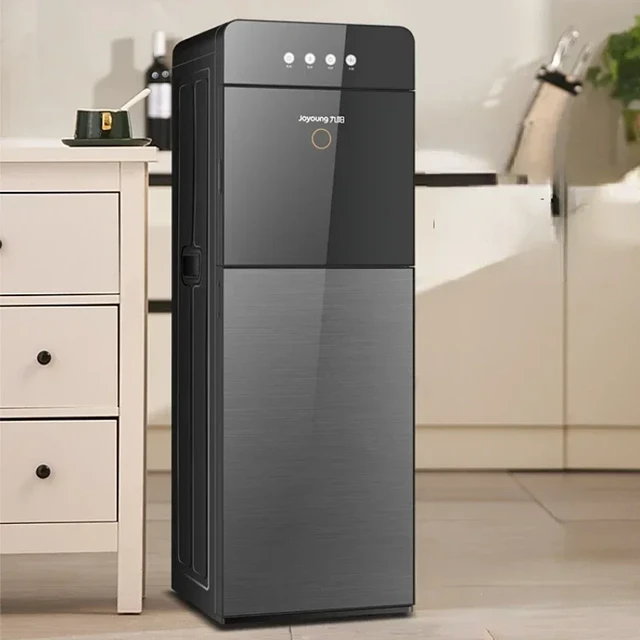Introduction
Maintaining the inside of your water dispenser is crucial for ensuring clean and safe drinking water. Regular cleaning helps remove any impurities, mineral deposits, or bacteria that may accumulate over time. In this step-by-step guide, we will walk you through the process of cleaning the inside of a water dispenser effectively. From powering down and emptying the dispenser to tackling specific components, we will provide detailed instructions to help you keep the inside of your dispenser pristine and ready to deliver fresh, clean water.

How do you clean the inside of a dispenser?
Power Down and Unplug the Dispenser
1.1. Safety Precaution
Before starting the cleaning process, unplug the water dispenser from the electrical outlet. This ensures your safety during cleaning and avoids any electrical hazards.
Empty the Water Bottle and Drain the Reservoir
2.1. Remove the Water Bottle
Take off the water bottle from the dispenser and empty any remaining water into a sink or drain.
2.2. Drain the Reservoir
To fully drain the reservoir, place a cup or container under the dispenser’s spout, and press the dispensing buttons to release any water still in the reservoir. Allow the water to completely drain out.
Dismantling Components
3.1. Consult User Manual
Refer to the user manual provided by the manufacturer to determine if any specific components need to be dismantled for cleaning. Different water dispenser models may have varying designs and requirements.
3.2. Detach Removable Parts
If applicable, detach any removable parts, such as the water tank, drip tray, or internal filters. Follow the manufacturer’s instructions on how to properly remove these components for cleaning.
Preparing the Cleaning Solution
4.1. Mild Soap or Cleaner
Prepare a cleaning solution by mixing warm water with a mild soap or cleaner specifically recommended for water dispenser cleaning. Avoid using harsh chemicals or abrasive cleaners that may damage the dispenser’s components.
4.2. Dilution and Quantity
Follow the instructions provided by the manufacturer regarding the proper dilution ratio or quantity of cleaning solution to use.
Cleaning the Inside Surfaces
5.1. Dipping a Soft Cloth or Sponge
Dip a soft cloth or sponge into the cleaning solution, ensuring it is damp but not dripping wet. The cloth or sponge should be suitable for cleaning delicate surfaces and avoid scratching or damaging the interior components.
5.2. Wiping Down the Interior
Gently wipe down the inside surfaces of the dispenser using the cloth or sponge. Pay close attention to areas where mineral deposits or mold may accumulate, such as the water tank, valves, and tubing.
5.3. Removing Stubborn Stains or Deposits
For stubborn stains or mineral deposits, apply gentle pressure and use a scrub brush or toothbrush (if recommended by the manufacturer) to assist in loosening the buildup. Be cautious not to use excessive force that could damage the interior components.
5.4. Reaching Hard-to-Access Areas
Pay attention to hard-to-access areas, such as corners or crevices. Use the toothbrush or a smaller scrub brush to reach and clean these tight spaces thoroughly.
Cleaning Individual Components
6.1. Water Tank
If the water tank is removable, fill it with the cleaning solution, making sure to reach all areas. Allow the solution to sit for a few minutes to break down any contaminants or deposits. Use the soft cloth or sponge to scrub the interior surfaces of the tank, paying attention to any areas with residue or stains. Rinse the tank thoroughly with clean water to remove any traces of the cleaning solution.
6.2. Drip Tray
Clean the drip tray separately using the same cleaning solution. If the drip tray is removable, soak it in the solution for a few minutes to loosen any buildup or stains. Scrub the tray with a soft brush or sponge, paying attention to the drainage holes. Rinse the drip tray thoroughly with clean water and dry it before reattaching.
6.3. Internal Filters
If your water dispenser is equipped with internal filters, follow the manufacturer’s instructions on cleaning or replacing them. Some filters may be disposable and require replacement, while others may be washable. Consult the user manual for specific guidance on how to maintain and clean the filters effectively.
Rinsing and Flushing
7.1. Thorough Rinsing
Once you have completed the cleaning process, thoroughly rinse all interior surfaces, including components and tanks, with clean water. This step ensures the removal of any residual cleaning solution.
7.2. Flushing the System
To flush the system, reconnect all the dismantled components, such as the water tank, drip tray, and filters, if applicable. Fill the water bottle with clean water and place it back on the dispenser. Press the dispensing buttons to run water through the system, flushing out any remaining cleaning solution or debris. Continue the flushing process until the water runs clear and free from any traces of the cleaning solution.
Drying and Reassembling
8.1. Drying the Components
Before reassembling the dispenser, ensure that all components, including the water tank, drip tray, and filters, if applicable, are thoroughly dry. Use a clean, dry cloth or towel to wipe the surfaces and remove any remaining moisture.
8.2. Reattaching Components
Properly reattach all the components that were removed for cleaning. Make sure they are securely in place and aligned correctly within the dispenser.
Powering On and Ready for Use
9.1. Plug in and Power On
After ensuring that all components are properly reassembled and the dispenser is dry, plug it back into the electrical outlet and turn it on. Ensure that the dispenser is functional and ready for use.
9.2. Water Testing
Run a small amount of water through the dispenser to confirm that it is dispensing fresh and clean water. Discard the initial water discharge to eliminate any water that may have been stagnant during the cleaning process.
Regular Maintenance and Cleaning Schedule
10.1. Frequency of Cleaning
To maintain optimal performance and cleanliness, it is recommended to clean the inside of your water dispenser every 1-3 months. However, usage patterns, water quality, and visible debris may influence the cleaning frequency.
10.2. Reminder and Schedule
Set reminders in your calendar or use smartphone apps to help you remember when it is time to clean the inside of your water dispenser. Having a regular maintenance schedule ensures that the dispenser continues to deliver clean and refreshing water while extending its lifespan.
10.3. Replacing Filters
If your water dispenser has replaceable filters, refer to the manufacturer’s instructions for recommended replacement intervals. Following the recommended schedule helps maintain water quality and dispenser performance.
Conclusion
Cleaning the inside of your water dispenser is essential for ensuring clean and safe drinking water. By following this step-by-step guide, you can effectively clean the interior components and surfaces of your dispenser. Regular maintenance and cleaning will help remove impurities, mineral deposits, or bacteria that may accumulate over time. Maintaining the cleanliness of your water dispenser ensures a continuous supply of fresh, clean, and safe drinking water for you and your family.

